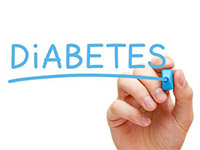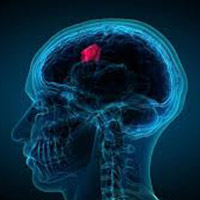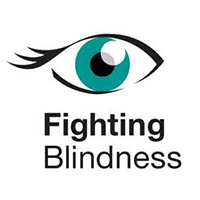Our comprehensive eye examination revealed a very small change in your prescription and we suggested that your current prescription remain unchanged at this time. Should you however notice any changes in your vision please see us at your soonest convenience so that we can assess the changes and treat accordingly. We also assessed the health of your eyes, which is far more important than changing your spectacles. Please ensure that we are afforded the opportunity to re-examine your vision and eye health in one year from now.
Your eyes reveal more about your health than just good or poor visual acuity. We are able to assess and detect early signs of diseases which may or may not affect your vision in the early stages. As our bodies are constantly changing, an annual eye exam will ensure that your prescription lenses are giving you the best possible vision. It is hard to discern any small deterioration in our own eyesight, hence the importance of the eye examination to detect these changes. Futhermore, when vision changes in only one eye the other eye may compensate for it, resulting in this change going unnoticed. In the long-term this causes eyestrain often resulting in headaches, nausea and in some occasions irreversible vision loss.
Subtle Changes
Although we are not changing your prescription at this time, be aware of subtle changes. Our eyes will naturally try to focus on items we are trying to see. If you notice yourself straining to see something properly, or if you get frequent headaches, neck aches, or seem to be squinting often, you are probably having to try too hard to focus your eyes, which means we might need to effect the small change in your spectacle or contact lens prescription.
Here is a simple daily check to do. Ask yourself these three questions:
- Do my eyes feel good?
- Do my eyes look good?
- Can I see well?
If you answer “NO” to any of these questions You should see your eyecare practitioner soonest. The routine checks your eyecare practitioner will perform are painless and often non-invasive and could detect a host of disorders that might need treatment.
New Technology
Just like computer technology, the technology behind spectacle and contact lenses is constantly improving by leaps and bounds. Every year, improvements are made in lens design to help offer you the best in vision, and many occupation-specific lens aids have risen in availability in the past few years.
For example, if you work long hours staring at a computer screen, there are lenses which can help to reduce the glare of the screen and reduce your overall eye strain. Even though your prescription has changed slightly, you may want to investigate new spectacles or contact lenses to take advantage of the technological advances in lenses and contact lenses.
Routine checkups
The American Optometric Association recommends that non-senior adults and children over age 6 have regular eye exams a minimum of once every two years if they do not have risk factors for poor vision.
Seniors over age 60 and individuals with risk factors should have an eye exam every year, or more frequently if recommended by their eye care practitioner. Be sure to take any aid or old spectacles to the eye examination so that your eye care practitioner can inspect for any defects associated with normal wear and tear as well as advise if a change in prescription is required.
Disease detection
The eyes may be the "windows to the soul" but they also offer an insight into your general health. In fact, the inside of the eye can reveal signs of any vascular disease from diabetes to high blood pressure. Optometrists and ophthalmologists are able to detect many serious conditions while they are still in the early stages. Sadly research by the Eyecare Trust reveals that less than 40% of people do not have our eyes checked every two years, as recommended, and 1 out of 10 people has never had an eye examination.
Here are a few of the conditions an eye examination can detect:
(1) Diabetes is estimated to affect 750,000 people in the UK but don't know it, according to Diabetes UK. If untreated, the life-threatening condition can lead to impaired vision or even blindness. A comprehensive eye exam can detect the first signs. That's because over time, a high blood-glucose level can weaken and damage the tiny blood vessels on the surface of the retina. Dot haemorrhages or tiny leaks from damaged blood vessels are one of the indications of diabetes. Patients may then reveal they are experiencing other symptoms like going to the loo a lot and thirst are tell-tale signs of early diabetes.
Annual eye exams are recommended for any individual who has diabetes or is over 40 with a family history of glaucoma. And six-monthly checks are advised for under-16s. But, if you feel your vision is changing or your eyes feel uncomfortable, don't wait until your appointment is due. See your optometrist immediately.
(2) High blood pressure is also detectable. Squiggly blood vessels on the retinal surface can be detected which is often as a result of elevated blood pressure. These changes are triggered by the force of the blood passing through which can lead to haemorrhaging behind the eye. “It's quite common to spot high blood pressure signs in the eyes of younger people who haven't started having regular checks for the condition.
(3) Cardiovascular disease as a result of high cholesterol can cause blockages in any of the body's blood vessels - including those in the eyes. During the eye examination, an optometrist can spot little lumps of cholesterol running through the blood vessels. Eventually they can cause blockages and lead to 'blind spots' in vision but until that point there is no pain, and no symptoms.
(4) Cataracts are like the lens in a camera. If the lens inside the camera become cloudy, it is not possible to clear it without dismantling the camera and replacing the cloudy lens. Likewise, the lens in the eye needs to be clear to work properly. With age and some conditions, it can gradually become "cloudy" - causing blurred vision. An optometrist can spot the early signs of a cataract before blurring occurs. Simply making one’s spectacle lenses stronger is not an option in these cases. Surgical intervention is necessary to remove the cloudy lens and replace it with a new clear lens.
(5) Glaucoma is a condition that is caused by high pressure inside the eye. This causes irreversible damage to the retinal nerve fibres, ultimately leading to vision loss and if not treated, it can lead to blindness. The main risk is ageing, but you're at a higher risk if you have the condition in the family, are Afro-Caribbean, very short-sighted or have had a previous eye injury. The danger with glaucoma is that your eye may seem normal," explains Iain Anderson. "In most cases there's no pain and you may not notice changes in your eyesight. However, your vision is slowly being damaged." Early diagnosis and regular monitoring by your eyecare practitioner, and treatment to reduce eye pressure can minimise further sight loss.
(6) Macular degeneration is usually Age Related. The macula is the tiny small but vital area in the centre of the retina responsible for detailed central vision, but with age the cells can become damaged. There are two types of macular degeneration - "wet" and "dry". This is not a description of what the eye feels like but what the eye care practitioner sees when examining the inside of the eye. The dry condition develops very slowly over a period of years, causing a gradual loss of central vision, whereas the Wet type causes a rapid loss of central vision. Both forms are painless and usually affect one eye more than the other. This makes it difficult to notice because the patient's "good" eye compensates for loss of sight in the affected eye.
(7) Cancerous growths can occur inside the eye as in any part of the body, but thankfully cases are very rare. By examining the inside of the eye, in some cases the optometrist is able to see a suspicious looking growth and make an urgent referral to an eye specialist for further investigation and treatment. Early detection is vital if treatment is to be successful. If you have any changes in vision, make an immediate appointment to see your optometrist.
(8) Brain tumours are very rare, but some tumours are possible to detect during an eye examination. A brain tumour can trigger a rise in intracranial pressure which causes the optic disc to swell. This can sometimes be seen when looking into the eye. It often occurs in the earliest stages before symptoms such as headaches or nausea.
It is good practice to make time for an eye exam. Broken bones heal, but if you lose your sight in one or both eyes, that's it. Look after them - they're precious.
Spectacle care
You may have done everything you could to prevent damage to your glasses, but it is possible that they still could be scratched, or the delicate coatings may be defective in some way. You may consider having a new pair made up if your spectacle lenses have any sign of wear and tear, especially on the lenses or on crucial moving parts.
The older a pair of glasses is, the more likely it is to have some form of damage, so understand that if your glasses are many years old, it would be wise to invest in a new pair.
Servicing
Visit our practice regularly so that we assist you with the following services in order for you get the best out of your spectacles:
- Check alignment and positioning.
- Re-adjust for optimal comfort.
- Provide extensive and ultrasonic cleaning.
- Replace nosepads if required.
- Tighten and secure all screws.
- Inspect the lenses and frames for defects.
It is good practice to make time for an eye exam on an annual basis. Broken bones heal but if you lose your sight in one or both eyes, the vision can not be replaced. Look after your eyes - They are precious.




